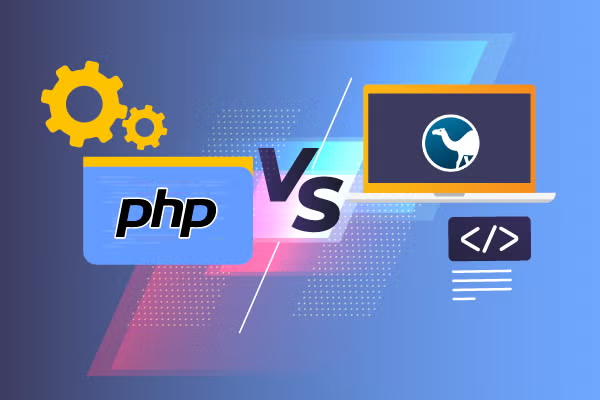PHP vs Perl: What’s the Difference?
Developers often debate the pros and cons of programming languages. Two popular server-side scripting languages are PHP and Perl. Both have unique strengths. Let’s explore their differences and see which one might suit your needs.
What is Perl?

Perl, short for “Practical Extraction and Reporting Language,” was created in the late 1980s by Larry Wall. It’s a general-purpose scripting language built using C. Perl is known for its flexibility and strong text manipulation capabilities.
It works on multiple platforms and supports HTML, XML, and other markup languages. Perl also works with databases like MySQL, Oracle, and PostgreSQL. It’s open-source and supports both procedural and object-oriented programming.
Perl is often called the “Swiss Army chainsaw” of scripting. It’s powerful but can be complex. It’s used for tasks like system administration, web development, and GUI improvement.
What is PHP?

PHP, originally “Personal Home Page,” now stands for “PHP: Hypertext Preprocessor.” It was created in the 1990s by Rasmus Lerdorf. PHP is a server-side scripting language used by 78.9% of websites with a known server-side language.
PHP is easy to learn and integrates well with HTML. It requires less coding than Perl, making it a popular choice for web development. PHP runs on Unix, Linux, Windows, and Mac OS X.
Like Perl, PHP is open-source and free to use. It’s an interpreted language, so no compilation is needed. PHP is widely used for dynamic web pages and frameworks like WordPress.
Perl vs PHP: Key Differences
1. Ecosystems and Community
Perl has a strong community and a rich library of modules through CPAN (Comprehensive Perl Archive Network). CPAN offers over 250,000 modules for various tasks.
PHP uses Packagist and Composer. Packagist has over 340,000 packages, including frameworks like Laravel. Composer manages dependencies, making it easy to add libraries to PHP projects.
Both languages have active communities, but PHP’s ecosystem is larger and more modern.
2. Performance
Both PHP and Perl are interpreted languages. This means they are slower than compiled languages like C. However, tools like PHP-FPM (FastCGI Process Manager) and mod_perl improve their performance for web applications.
PHP is generally faster for web tasks. Perl excels in text processing and system administration. Speed depends on how you use the language.
3. Popularity
PHP is more popular than Perl. It powers nearly 80% of websites with server-side scripting. PHP’s simplicity and ease of use make it a favorite for web developers.
Perl’s popularity has declined in recent years. It’s still used for system administration and legacy systems but is less common in new projects.
4. Documentation and Learning
PHP has extensive documentation and learning resources. Websites like php.net and W3Schools offer tutorials and guides. PHP releases updates yearly, ensuring security and performance improvements.
Perl also has good documentation, but fewer learning resources are available today. Sites like learn.perl.org help beginners get started. Perl’s community is smaller, but it remains a powerful tool for specific tasks.
Which is Better?
The answer depends on your needs. Perl is great for text processing, system administration, and automation. PHP is better for web development, dynamic pages, and frameworks like WordPress.
PHP is easier to learn and more widely used. It’s the go-to language for web projects. Perl remains a strong choice for specific tasks but is less popular overall.
Frequently Asked Questions
Is PHP faster than Perl?
Is Perl a dead language?
Is PHP becoming outdated?
What is the latest version of PHP?
Conclusion
Both PHP and Perl are powerful scripting languages. PHP is better for web development, while Perl excels in text processing and system tasks. PHP’s simplicity and popularity make it the winner for most developers.
Want to learn more about scripting languages? Visit Progressive Robot’s blog for guides and comparisons.
For more information or to get started, contact Progressive Robot today!







